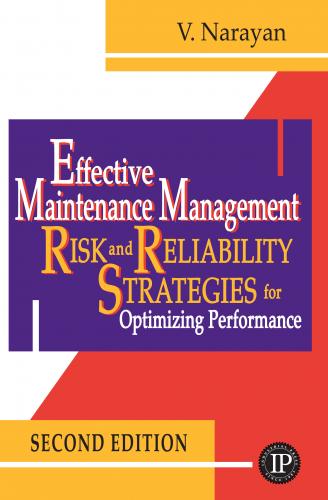1.Resnikoff, H.L. 1978. Mathematical Aspects of Reliability Centered Maintenance. Dolby Access Press.
2.Nowlan, F.S., and H.F.Heap. 1978. Reliability-Centered Maintenance.U.S.Department of Defense.Unclassified, MDA 903-75-C-0349.
3.Lorenzo, D.K. 2001. A Manager’s Guide to Reducing Human Errors: Improving Human Performance in the Process Industries.API Publication 770.
4.Swain, A.D., and H.E. Guttmann. 1983. Handbookof Human Reliability Analysis with Emphasis on Nuclear Power PlantApplications. MJREG/CR1278FSAND80200. 334.
5.Bransby, M., and J. Jenkinson. 1998. “How Alarming!” The Chemical Engineer. January 15: 16.
6.Lardner, R., and R. Miles. 1997. “Better Shift Systems.” The September 11: 28.
7.Moubray, J. 2001. Reliability-Centered Maintenance. Industrial Press, Inc. ISBN: 0831131462.
ERROR PRONE SITUATIONS
Reproduced courtesy of the American Petroleum Institute (see Reference 3 above). A check-list of work situations that could lead to human errors is listed below, based on Lorenzo.
•incomplete, inadequate, out of date, or non-existent procedures
•poor or misleading instrumentation
•lack of competence and knowledge
•conflicting priorities, especially between safety and production
•poor labeling
•inadequate feedback
•non-enforcement of policies and procedures
•excessive spurious trips, causing protective instruments to be defeated
•poor communications
•unsatisfactory plant layout
•control systems that are over-sensitive
•mental overload during emergencies
•error prone situations, typically with excessive manual operations, inadequate interlocks, or wrong use of interchangeable fittings
•improper tools and test equipment
•poor housekeeping
•excessive demand on operator vigilance
•software or control hardware faults
•poor ergonomics
LifeCycle Aspects of Risks inProcess Plants
Every process plant goes through its design, construction, commissioning, operating, and decommissioning phases. In this book, the term process plant covers any plant that uses the production or distribution process as defined in Chapter 1. It includes, for example, utility companies, paper and steel mills, and transport companies. As long as the product or service handled is physical, the principles are applicable to all of these plants. We can minimize the risks associated with each of these phases when we know the contributing causes. In this chapter, we will focus our attention on these life cycle risks, and cover the following areas:
•Quality of design and intrinsic reliability of the plant;
•Importance of simplicity in designs;
•Risks in the construction and commissioning phases;
•Design changes and the high level of associated risks;
•Maintenance cost-drivers; risks associated with unstructured cost reductions; ways to reduce costs without losing control on safety and profitability;
•Process plant end-of-life activities and associated risks.
Commissioning a new plant can be an exhilarating or frustrating experience, depending on how well the designer has anticipated start-up problems, and whether the plant functions as required. It is not unusual to find a number of change requests being initiated during and shortly after commissioning the plant. If the change requests relate to the original functional requirements, operability, or maintainability, they indicate deficiencies in the design. The number and scope of such requests are measures of the level of dissatisfaction.
Other change requests relate to the desire to increase plant capacity. By operating new plants at design and higher-than-design throughputs,we can test them. Some equipment, piping, or logistics will stand out as bottle-necks. Lack of balance between the different parts of the plant is the cause of these bottle-necks.Change requests that relate to the removal of these bottle-necks are capacity-increase projects. De-bottle-necking projects can potentially lead to reliability problems. Hence,these risks need careful evaluation.
We cannot avoid some of this imbalance, for which there are several contributing factors. First, when the designer needs items such as a length of pipe, a centrifugal pump or a gas turbine, the vendors would offer it in a standard range of sizes. The designer does not have the choice of trimming the sizes. As long as the item on offer is close to the specifications and budget, it is acceptable. Hence, the selected items are usually larger or stronger than required. Second, there is always a residual amount of uncertainty in any new design, in spite of all the analysis and expert inputs. The designer will build in some ‘fat’ to take care of these uncertainties.
Third, there may be bonus or penalty clauses in the contracts to ensure that the plant design meets its functional requirements. Turnkey contracts often have such provisions. The cost of building in a little extra capacity is usually quite small in comparison to these bonuses and penalties. The designer avoids the penalties and adverse publicity by building in some over-capacity.
Last,the designer uses redundancy to guarantee the reliability of the plant. Sometimes installed spare equipment is necessary for safe and reliable operation of the plant. However, in many cases, custom and practice dictate the decision-making process. The correct method is to carry out a risk analysis before choosing installed spare capacity. However company standards and codes of practice often mandate such practices. All of these factors contribute to over-capacity or fat in some parts of the plant.
We often purchase oversized equipment without realizing that this is happening. As an illustration, consider the selection of a centrifugal pump. The sequence of events is often along the following lines:
•The process designer calculates the discharge pressure required to overcome the back pressure at the rated flow,the available suction head, and the drop in the piping,valves, and fittings. These include an allowance for uncertainty.
•The instrument designer adds the pressure drop across orifice plates and control valves, again including an element for uncertainty.
•The project engineer writes the requisition for the pump,and invites bids from vendors.
•The buyer’s equipment specialist looks at the pump selection charts among the offers received, and selects a suitable pump, usually the next size above the required capacity. The selection charts show the flow and pressure combinations that a given model can provide.
•In producing the selection charts, the vendor has allowed for some manufacturing deviations and de-rated the equipment slightly. This gives the vendor a comfort cushion to cater for uncertainty.
•As a result of all these allowances, the pump discharge pressure can be, say, 20-40% higher than required at rated flow. This additional pressure energy will be
